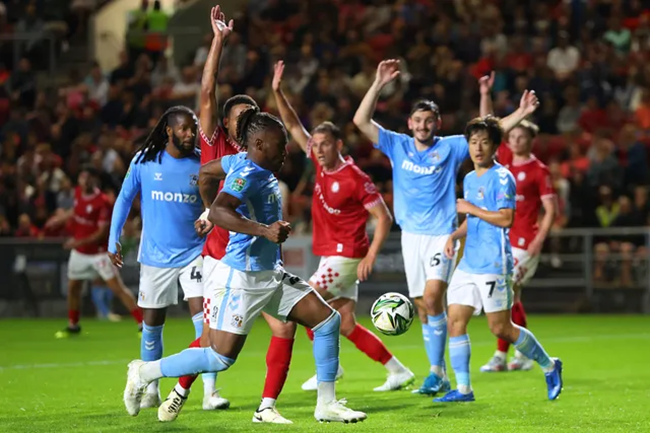
The UK’s top soccer league is switching up the tech it uses to detect offside violations on the football pitch. The Premier League has contracted with a company called Genius Sports, which will use dozens of iPhones combined with machine-learning models to help game officials make an offside call.
Offside violations aren’t always clear-cut, especially when players are grouped in a way that blocks officials and even multiple camera angles from seeing enough detail to accurately call them. That’s where video assistant referee (VAR) systems usually come in, ostensibly filling in the gaps using cameras and machine learning.Offside violations
Soccer leagues have used VAR systems for years. FIFA, soccer’s global league, started officially using machine learning-powered limb-tracking tech and embedded soccer ball sensors in 2022 after a trial run the previous year. The software could track 29 points of players’ bodies, but those systems have limits and often cause “extensive delays and human process errors” and “concerns about the precision of in-game calls,” writes Wired in a report about the Premier League’s deal with Genius Sports.started officially using
Genius calls its offside detection tech “Semi-Assisted Offside Technology” (SAOT), chief product officer Matt Fleckenstein told The Verge in an interview. It’s part of the company’s GeniusIQ system, which also powers its fan-facing offerings that create features like real-time, dynamic graphics (think trails that follow a soccer ball).
Genius says its SAOT tech can accurately create 3D renders of each player and that this helps officials define exactly where the offside line is on the field and where all the players are in relation to it. To do that, the company needs a lot of cameras.3D renders of each player
“We were moving away from 4K cameras that were significantly more expensive,” Fleckenstein said. “We wanted to see if we could move to a more off-the-shelf mobile phone.” The company ended up using iPhones, largely because it’s what the company’s employees were most familiar with when it comes to things like software development.
Fleckenstein said that “the key is to deploy 24 to 28” iPhones — mostly iPhone 15 Pros — to get even coverage of the pitch and the sidelines, usually in pairs of custom rigs that each hold two phones at a time, and are angled slightly differently to make sure an area is covered.
This approach apparently gives Genius “between 7,000 and 10,000” data points that allow it to generate a kind of 3D virtual mesh of each player. Having so many data points means the system can tolerate missing details from things like lighting issues, Fleckenstein said.
On top of that, iPhones can record at very high framerates — Genius records at 100fps but has tested as much as 200fps — and the phones offer some local computer vision processing, too. All of the data is sent to an on-premise server to be processed by its GeniusIQ system.
GeniusIQ’s computer vision and predictive algorithms process the data to identify individual body parts — down to players’ individual fingers — and predict where they are when they’re blocked from view. The company trained its system on “several seasons” of soccer matches to be able to do this, according to Wired.
All of this is in service of figuring out where every player is in relation to each other, the ball, and the goalkeeper. Offside calls are made “when the ball leaves the offensive player’s foot,” Fleckenstein said, so having more frames captured makes it more likely the cameras will capture the exact moment that happened.
The official rules of soccer are very specific about what makes a player “offside,” but it’s not clear if more granularity makes GeniusIQ better than existing alternatives. Fleckenstein wouldn’t offer any performance comparisons but pointed out that other VAR systems may only use “30 or 40 points of the body,” building a sort of rough stick figure version of the player. Or they may only use “center of mass” tracking, where each player is represented by a single data point.
We’ll find out soon enough if Genius Sports’ offside detection technology really can do a better job than the VAR systems of the last few years. It’s expected to go into full use by the Premier League before the end of this year and continue through the season. Fleckenstein said the exact date hasn’t been announced.
Author: Wes Davis
Source: Theverge



